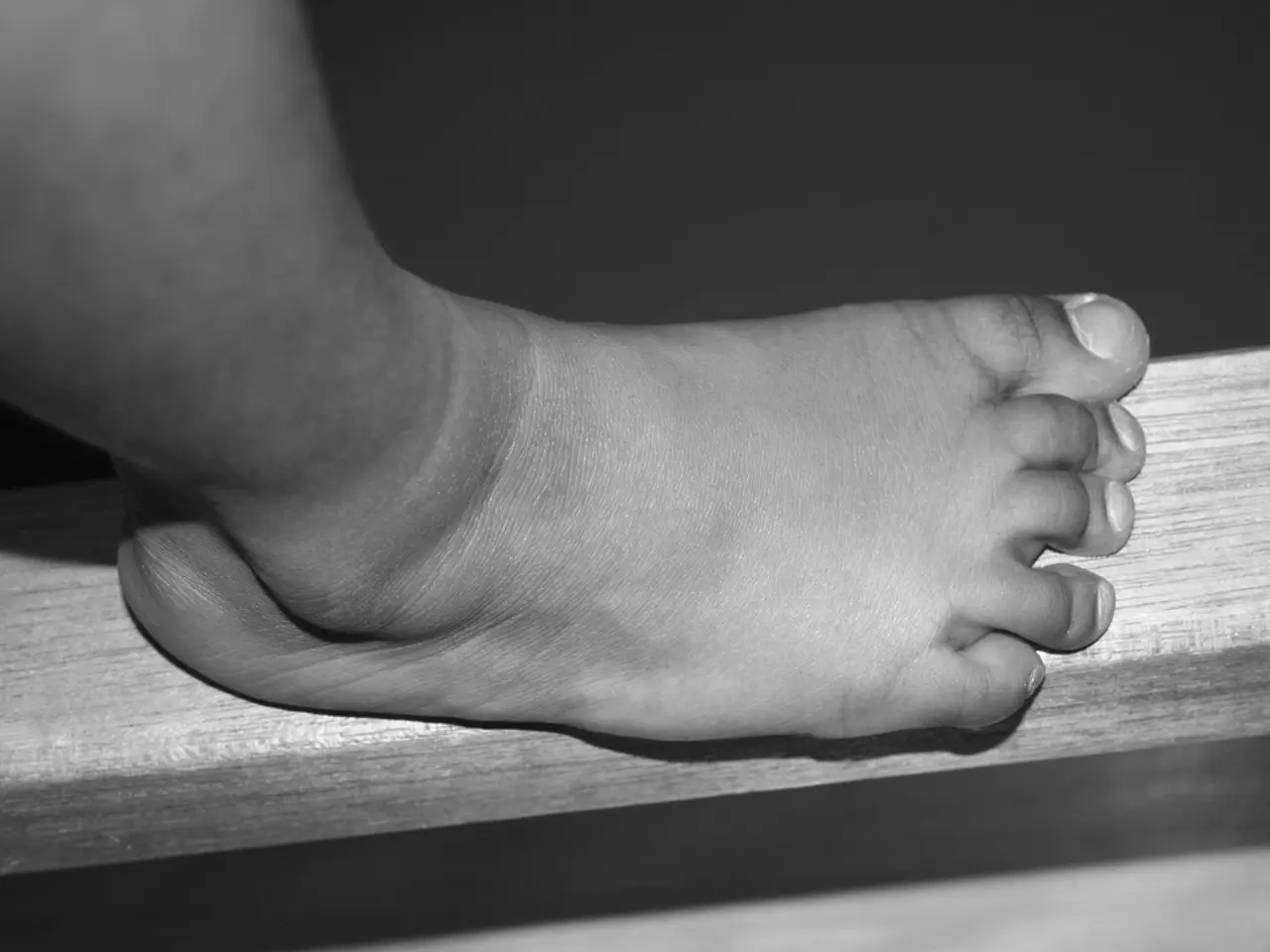Mysteries surrounding leg bruising: What's the cause? Can it be treated?
Bruising on the legs can be a cause for concern, especially when it occurs frequently and without a clear cause. This article explores the common causes of unexplained bruising on the legs, symptoms to watch out for, and potential treatment options.
One of the primary reasons for frequent bruising is related to blood clotting or platelet disorders. Conditions such as hemophilia or Von Willebrand disease, which impair normal blood clotting, can lead to easy bruising. Vitamin deficiencies, particularly in vitamin C and vitamin K, can also contribute to increased bruising due to their impact on blood vessel and clotting function.
Other causes of unexplained bruising include the use of blood-thinning medications, genetic predisposition, heavy physical activity, underlying health conditions, poor circulation, and certain dietary supplements. For instance, supplements like ginkgo biloba, fish oils, garlic, and turmeric may cause bruising.
Several underlying health conditions can lead to frequent bruising, such as liver disease, cancer (like leukemia), and vascular diseases affecting circulation and vessel integrity. People with a family history of easy bruising may also experience frequent bruising.
Autoimmune conditions like rheumatoid arthritis and lupus may cause unexplained bruising. In some cases, bleeding disorders like Factor V deficiency, Bernard-Soulier syndrome, and hemophilia can cause increased bruising and other symptoms.
If bruising occurs without an obvious cause or is accompanied by other symptoms like swelling, pain, or changes in mobility, medical evaluation is important to identify any underlying disorders. Treatment options for conditions causing easy bruising vary depending on the specific diagnosis. For example, thrombocytopenia, a condition with low blood platelet counts, can increase the risk of bleeding and bruising. Treatment options for thrombocytopenia include corticosteroids, immunoglobulins, blood or platelet transfusions, splenectomy, and factor replacement therapy.
It's essential to remember that bruising can also be a sign of physical abuse, especially if it is inconsistent with injury patterns, covers a large area of the body, or occurs in infants who cannot yet walk or crawl. If you suspect physical abuse, seek immediate help from a trusted authority or hotline.
In summary, frequent unexplained bruising on the legs often results from a combination of factors related to blood clotting, vitamin deficiencies, medications, physical activity, or vascular health issues. If you are experiencing frequent or unexplained bruising, it's important to consult a healthcare professional for a thorough evaluation.
- Predictive tests may help identify underlying causes of unexplained bruising in some cases.
- Psoriatic arthritis, an autoimmune disease affecting the skin and joints, could potentially cause unexplained bruising.
- Paxlovid, an antiviral medication used to treat COVID-19, is known to affect blood clotting and may cause increased bruising.
- Retargeting marketing strategies in health and wellness products can be beneficial for reaching individuals with chronic diseases like multiple sclerosis or diabetes.
- Inadequate blood circulation, a symptom of chronic-kidney-disease, could lead to easy bruising and can thus affect skin-care.
- COPD, a chronic lung disease, may lead to bloodpoisoning due to its impact on circulation, causing increased bruising.
- Contextual analysis of patient data can help medical professionals make more accurate diagnoses and treatment decisions for individuals with chronic diseases like NSCLC (non-small cell lung cancer).
- Sclerosis, a disease that hardens the arteries, can cause poor circulation and increase the risk of bruising.
- AQ, or aquaporin, a protein in cell membranes that helps control water flow, is relevant to the study of various medical conditions, including kidney and liver diseases, which could potentially lead to unexplained bruising.
- Depression, a mental-health issue, is often associated with chronic-diseases and can limit an individual's motivation to pursue treatment options for any accompanying health concerns, such as easy bruising.
- Type 2 diabetes, a metabolic disorder, might lead to arteriosclerosis, thickening and hardening of the arteries, increasing the risk of unexplained bruising.
- Thrombocytopenia, a condition where there are low blood platelet counts, can cause debilitating bleeding and ultimately, frequent bruising.
- CBD, a compound found in cannabis, is gaining popularity as a treatment for various conditions, including Crohn's disease, which can affect blood vessel function and potentially contribute to easy bruising.
- Big-wins in casino-games or lotteries can sometimes lead to excitement or stress, potentially exacerbating chronic-disease symptoms or mental-health issues, including depression.
- Responsible-gambling initiatives are important for addressing the potential negative impact of casino-and-gambling on mental-health and overall health-and-wellness.
- Casino-personalities, such as poker players, can face increased pressure and stress, potentially leading to mental-health concerns like depression, which might in turn impact their physical health and cause easy bruising.
- Science and medical advancements continue to provide new insights and treatment options for various medical-conditions and chronic-diseases, improving the quality of life for those affected by these conditions, including easy bruising.






